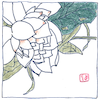Chinese, Han dynasty
manufacturing

|
Woodblock printing
Unlike a stamp or seal for making an impression in clay or wax, a woodblock for printing is inked so that its raised areas and lines mirror its design to cloth or paper. Woodblock-printed books suited the Chinese language, with its vocabulary of more than forty thousand characters, better than movable-type printing.
Color printing
In China, woodblock printing in color was used for fabrics, books on art, and erotica. In Japan, as in China, Buddhist scriptures were woodblock printed and mainly used black ink, but for secular books and art, Japanese printers developed sophisticated techniques using watercolor inks.
How to paint
During the Ming dynasty Hu Zhengyan of the Ten Bamboo Studio printed a manual of painting and calligraphy with new woodblock techniques that reproduced the effects of watercolor painting. Painters had already begun to include poems in their paintings. A light shines on leaves; complex branches cross gently. On a calm day the wind softly carries the sound of bells.
Provinance
Three unframed woodblock prints, two by Hokusai and one by Hiroshige, without memory or note of provinance, merely found in the garage. Once blocks were cut and colors set the printing house could reprint even a hundred years later. It’s hard to imagine they are worth a great deal, only these are not reproductions and their beauty transcends.



Woodblock printing spread from China to Japan in the 8th century. The “pictures of the floating world” by Hokusai and Hiroshige had a big influence on French painters, particularly van Gogh.
See also in The book of science:
Readings in wikipedia: